Pilates is a specialized and highly effective series of exercises – originally developed for male police officers and soldiers and later for sports injury rehabilitation.
In Hollywood, where I lived for decades, it’s common knowledge among fitness trainers and entertainment executives that most of the male action film stars and professional athletes do Pilates – though they often don’t talk about it because they believe it’s not “on-brand” for their “public.”
Though Pilates was initially created for military men and law enforcement, this unique body conditioning system was eventually made available to all genders, ages, and fitness levels – and even became popular with professional dancers.
Pilates can provide an excellent workout for mature men – and it’s a great way to trim the waistline.
What is Pilates?
Pilates is a type of strength conditioning that emphasizes agility, balance, and the body’s core muscles. The motivational video in this article will give you an idea of what’s involved in a Pilates-style workout.
Some of the issues men grapple with – whether they realize it or not – are:
- poor posture
- a compressed spine
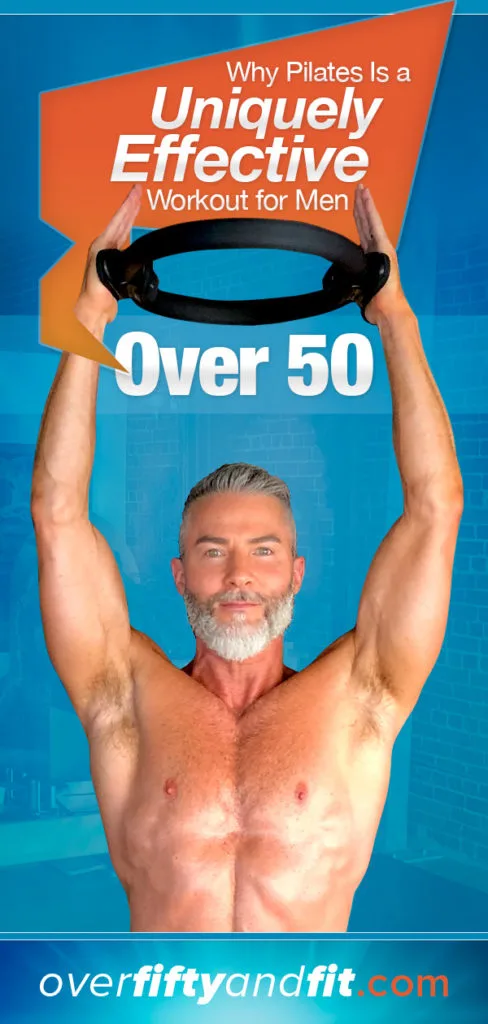
- decreased vitality
- a flabby waistline
- and a general lack of understanding about their own physical bodies and how they best operate.
Pilates can provide an excellent solution to these challenges.
Two Types of Pilates Workouts
There are essentially two types of Pilates in one-on-one training (additionally, there are also group classes).
1. Classical Pilates
The first type of training is Classical, which holds rigidly to the original teachings of Joseph Pilates.
This Classical style is particularly popular with athletes and advanced students (it’s not uncommon for Classical teachers to be educated in the method in New York by Romana – the official protege of Joseph Pilates – or one of Joseph Pilates’ other direct educational descendants).
This type of training is highly technique-oriented and sequenced.
You’re generally not allowed to mimic movements or progress to the next level until you understand how to do that particular movement or series.
For me, the Classical Pilates conditioning style has been immensely helpful in improving my posture, overall health, and even my appearance.
2. Modified Pilates
The second type of training is Modified, which is Pilates updated for our modern lifestyles.
As attention spans shrink in our culture, busy professionals who have hectic lives sometimes don’t have the patience for too much technique – they want to move and sweat, turn their brains off for 60-minutes and feel like they burned some calories, strengthened some muscles, and did something good for themselves. Modified Pilates was designed with such people in mind.
Pilates is the Solution to the Sedentary Lifestyle
I like both the Classical and Modified methods of Pilates; from my perspective, both types of workouts are helpful and garner results.
Of the two, the Classical method is my favorite. It just garners results like no other type of exercise I’ve ever tried.
Pilates is especially helpful to mature men because it prevents injury and targets abdominal and lower back muscles.
When your core muscles are strong, your entire body is supported.
Pilates workouts can be good for men with knee issues, neck problems, lower back pain, foot complications, or weak abdominals.
Pilates not only strengthens the muscles and firms the soft areas of the body, but it also tends to lengthen the body.
One feels taller after a Pilates workout.
I do sometimes wonder about the various ways mature people carve out time during their busy days to exercise:
- Where do they enjoy working out? At home? A gym?
- Do they power-walk, run, or hike in their neighborhoods?
- How often do most people exercise, and is that exercise enough to offset their otherwise sedentary lifestyles?
Unless you work in construction or are a farmer or rancher or something like that, modern life is sedentary – and we all must find ways to fit some sort of exercise into our daily lives. It’s easier said than done.
The truth is that all Pilates – whether Classical or Modified – is technique-oriented. So, for men who like to “burn off the stress” and “go for the endorphin-release,” Pilates would be better as one piece of a varied exercise program, including cardio and weight lifting, high-intensity interval training, and yoga.
However – in the end – there’s just nothing quite like Pilates.
“The idea of ‘success,’ for most people, revolves around money or the acquisition of property or other possessions, but we consider a state of joy as the greatest achievement of success. And while the attainment of money and wonderful possessions certainly can enhance your state of joy, the achievement of a good-feeling physical body is by far the greatest factor for maintaining a continuing state of joy and well-being.”
Abraham-Hicks
Pilates creates definition and overall fitness that I’ve been unable to replicate with any other regimen.
Men who have heard of Pilates – the exercise method – often think it must have something to do with stretching or dance. Pilates is a challenging workout – yet safe enough for rehabilitation – ideally suited for men. Pilates was originally developed for soldiers and police officers.
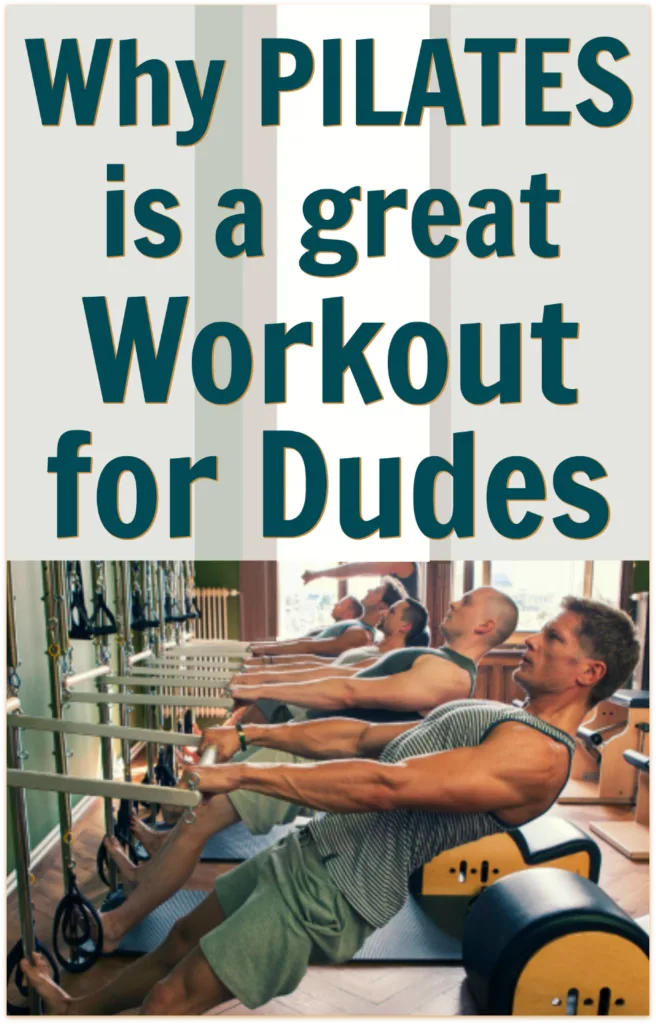
Imagine a time earlier in your life when you felt your very best. You were humming with energy – happy, healthy, and trim.
Hold that in your mind for a moment: remember the physical sensation of feeling energized, lean and enthusiastic.
And now imagine feeling one hundred times better than that.
Pilates is an outrageously effective system of body conditioning that helps improve posture, strength, flexibility, and appearance.
Pilates is available as one-on-one training, but there are also group classes – using mats and apparatus – which provide an affordable option for those on a budget.
Why the Best Investment Is in Your Own Health
Channeling time and energy into your health is – unquestionably – your best investment strategy. Excellent health is the one thing you can own worth more than money.
Do you desire to make a positive difference in the world?
If so, a long lifespan will increase your potential influence to spread kindness and do good deeds.
However, there is something even more important to you than lifespan, which is healthspan.
“Healthspan” represents the time you spend on earth while being both alive and thriving. That means you have the strength and energy to feel and spread joy.
Pilates might be helpful to you in building your healthspan. Living longer, living better, and living healthier are achieved incrementally, and classical Pilates provides a systemized way to improve health in sequenced steps.
Small improvement here, a tiny adjustment there – after a while, the new small habits begin to add up to improved health and longevity.
The best investment is in your own health because when you enjoy perfect health, anything else is ultimately possible in your life.
Perfect health is pure, cohesive, and positive potential:
- when you don’t have good health, you realize how important it is and would do practically anything to get it;
- when you do have excellent health, you have the foundational energy to create whatever you wish in your life.
With consistent Pilates workouts comes the sustained, robust energy you can parlay into achieving other mature life goals. I encourage you to invest responsibly in yourself and your well-being to have the potent, adventurous, and energetic life you deserve. Recognize health as your best investment.
Living Better is the Result of Stacking Small Good Habits
To live the Longevity Lifestyle and feel better than ever, you don’t just need information – you need a way to make the information “stick” to your life.
You can construct a successful aging strategy unique to your needs and then implement that strategy and make those new habits stick.
What has been well-researched yet little-known is this: mature people acquire new good habits most often because they move through 5 stages of permanent change.
Who’s On Your Wellness Team?
Extensive studies have shown us that permanent change occurs in pre-contemplation, contemplation, preparation, action, and maintenance.
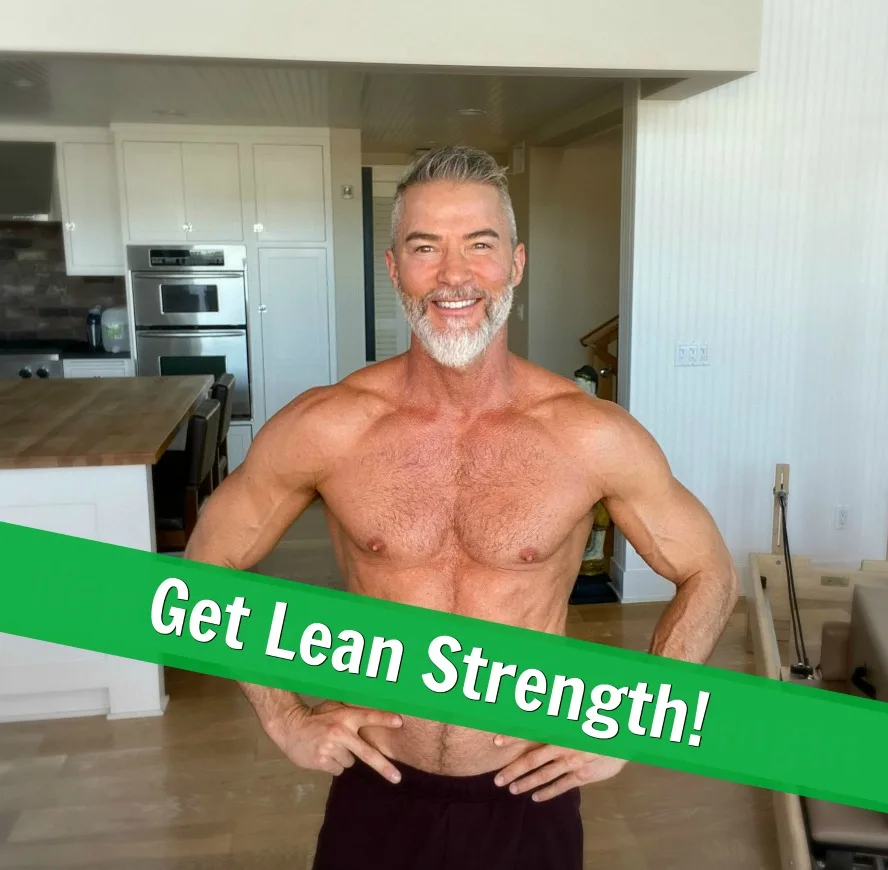
Never before have humans had access to so much information about how people can look younger, feel better, and live longer. I look through quite a bit of longevity research, and I’ve discovered that becoming healthier isn’t that difficult if you know what to do and in what sequence to do it.
You can take advantage of the era in which you live.
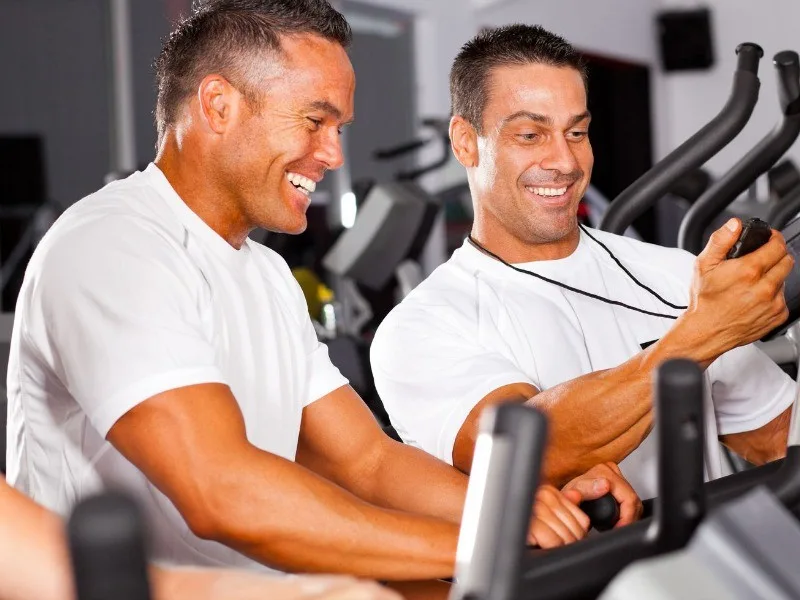
To invest in things outside of yourself is not the safest bet.
Cars, clothes, accounts – all of these can disappear in an instant.
That happens fairly often to people; they spend precious years of their life acquiring things only to find that when those things vanish, their identity is shaken.
However, you take two things with you wherever you go: your health and your education.
Your health and education come with you everywhere, despite external events or economic fluctuations.
And by “education,” I don’t mean a conventional college degree; I mean whatever valuable information, life lessons, and skills you have acquired over the years – whether this information was in a classroom, a Pilates studio, or on the front lines of real life.
“…after a while, new small habits will begin to add-up to improved health and longevity”
An astoundingly effective way to enrich your education is simply to surround yourself with mature people. But in whatever ways you educate yourself, do it relentlessly – and know that self-education can be a brilliant investment of your time and energy.
How to Craft Your Personal Wellness Team
It’s a strange thing to think about – let alone to say aloud – but the truth is that people either enhance your energy or drain it. “It can be no other way,” explains author Caroline Myss.
As your health becomes your top priority, you may find it helpful to consider your environment in terms of what supports your health and what does not.
Consider the people in your life who help enhance your positive energy and vitality as your immediate Wellness Team members.
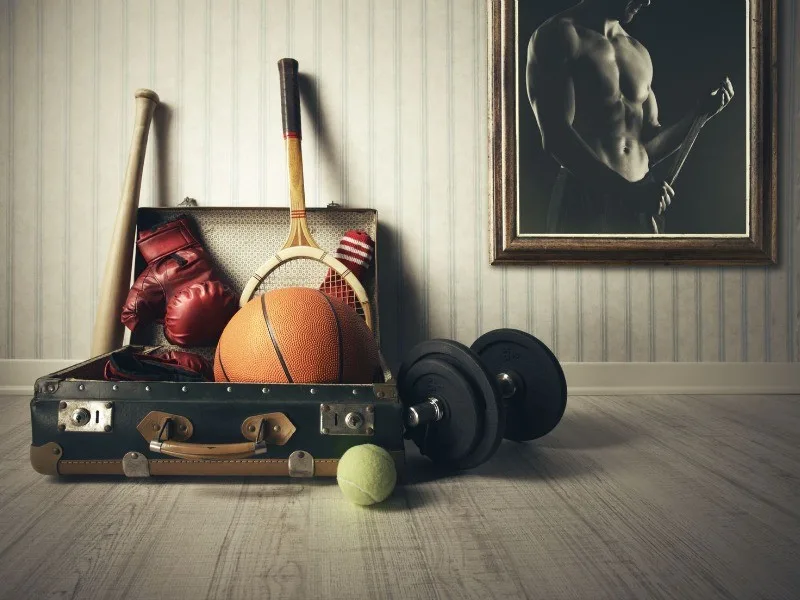
Your Wellness Team can include the friend with whom you walk the neighborhood on Saturday mornings; the spouse who encourages and supports you as you experiment with new lifestyle upgrades and self-care protocols; your medical doctor; your naturopath; your Pilates coach, your therapist; your tennis buddy – anyone who helps to uplift you in any way, directly or indirectly.
If you intend to make a positive difference – to use your life to leave the world better off than you found it – then you will need the energy to make that happen. Therefore, having a mature Wellness Team to help you cultivate that abundant, robust energy can be extremely helpful.
Remember this principle to bolster your Wellness Team: give to your givers.
Reciprocity is the magic ingredient for a fulfilling life.
Instead of giving your time to those environments or adults who deplete you, look for opportunities to give your energy and focus to those you’ve chosen as members of your Wellness Team.
Action Step: For today, I’m inviting you to express gratitude to a member of your Wellness Team. Let someone in your life who enhances your energy know how much you appreciate them.
As you go about your day, consider, “who is on my Wellness Team?”
- see this as a sacred and private internal dialogue (no need to discuss it aloud).
- resist the temptation to dwell upon who isn’t on your Team; instead, discover who is on your team, and celebrate it!
Excellent health is a journey – would you like to be on the path toward improved health?
Invest in your wellness and reap the dividends.
Your smartest investment is – and always will be – in your health.
Everyone eventually realizes that health is worthy of the top spot on their list of priorities.
But not everyone realizes it in time.
The downside to modern life is that it creates lifestyles in which our minds are over-stimulated, and our bodies are under-stimulated. This has created large-scale health challenges for our culture, such as dramatic increases in obesity and cancer.
Interestingly, exercise creates exponential vitality, meaning that the more active one is, the more active one becomes.
Pilates is particularly effective for creating mobility, tight abs, a healthy lower back, and a lean, defined body.
It’s great for men or women, plus both beginners and advanced athletes can do it, and – most importantly – it provides actual results. A recent article in the Journal of Bodywork and Movement Therapies revealed an appraisal of three research studies utilizing Pilates on human subjects and determined the “effectiveness of pilates in healthy adults to improve flexibility, transversus abdominis activation, lumbar pelvic stability, and muscular activity.”
One of the primary reasons I do regular Pilates workouts is that Pilates does more than work on the appearance of the outside of the body.
Pilates facilitates an internal experience – it increases awareness and calms the mind.
Another reason I continue to be an enthusiastic fan of Pilates is that it seems to have the lowest injury rate of any other type of exercise. What’s more: it’s rehabilitative. Consistent Pilates workouts can heal and correct the body. That’s what I believe.
Few things are better than that sustained feeling of vibrancy that is the result of true strength, flexibility, and high energy.
Good health is nature’s ultimate high; it provides the abundant oomph needed for daily life.
Do You Have Time for Pilates?
Improving your physical health – living longer, living better, having more energy – means improving habits. And you know what? Changing habits can be difficult, especially in the beginning.
Part of what makes changing habits so challenging is that modern life is so, well… noisy.
Daily life offers up an inexhaustible stream of distractions, and our hectic schedules are sometimes made even more challenging because of unanticipated problems.
Contemporary life necessitates that we find ways to divide up our waking hours between competing demands such as meal preparation, grooming, work, commuting, friendship, quality time with relatives and loved ones, workplace dynamics, and (if we can manage it) quiet time for ourselves.
When physical health is our top priority, this spells improved self-care, which requires more time. The more we age, the more important – and time-consuming – good self-care becomes.
Of course, in reality, there is enough time in the day to do everything that matters; it’s just that the ongoing list of responsibilities can seem endless.
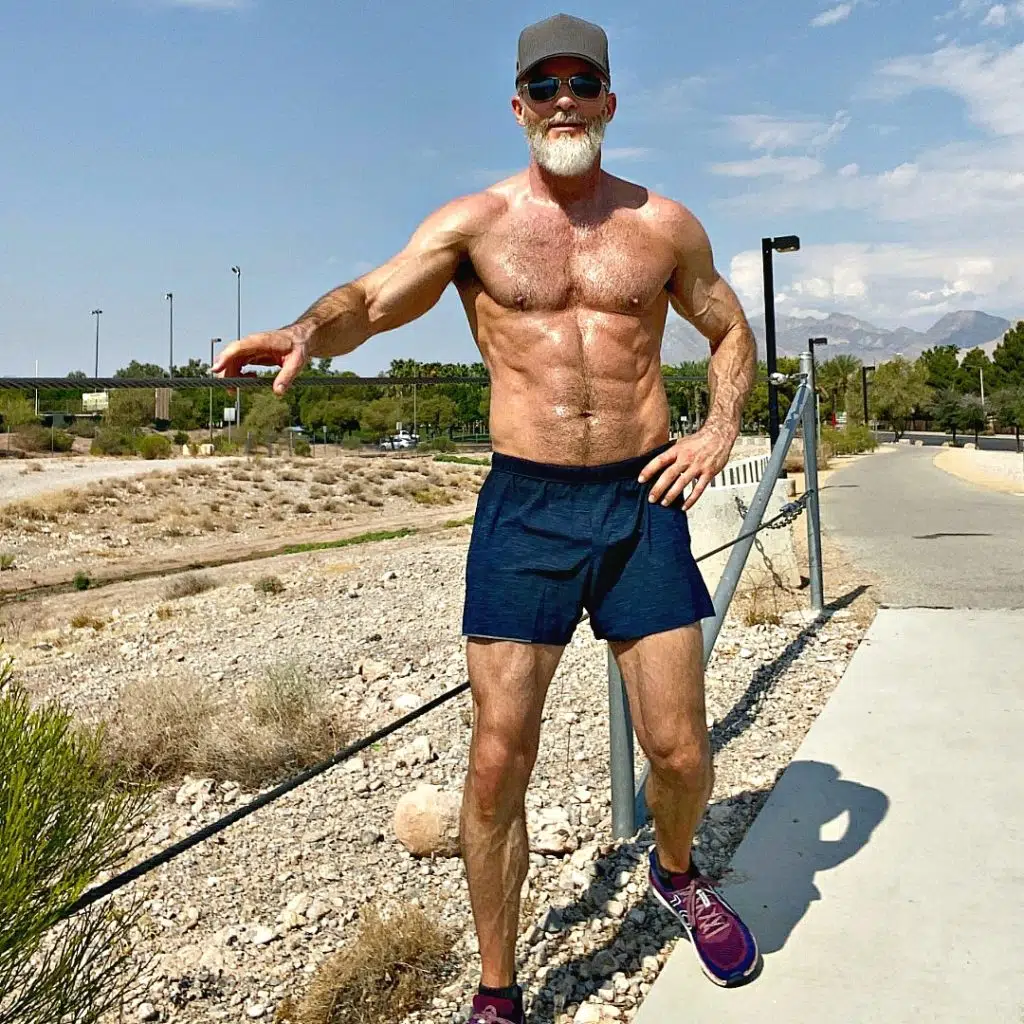
We inevitably begin to feel that our mental, emotional, physical, and spiritual well-being is being drained. “Will it always be this frantic?” we ask ourselves. We might also ask:
- is it possible to keep our balance as we continue nurturing the dreams we hold for ourselves (and do we still even know what those dreams are)?
- is it possible to get healthier with each passing year and increase our energy level – or must we become less healthy and more tired as we age?
- how can we better negotiate the powerful life currents that repeatedly wash over us, persistently challenging our abilities to create equanimity?
- how can we support and strengthen ourselves so that we do not contribute to (or get lost within) the growing sense of turmoil that seems to afflict so many?
- how can we foster an environment and attitude that encourages evolving self-realization, deeper meaning, and increased clarity and joy – allowing us to live a life we love?
- how can we thrive?
Ultimately, we need more physical and emotional energy to consistently tend to the dreams, people, and projects that mean the most to us.
The truth is that many people deal with aging by not dealing with it.
As we surpass age 40, 50, and beyond, we move closer to the moment of our death. Most of us don’t want to think about that, so we kind of block it out of our minds – which is easy to do, what with the hustle and bustle of daily life.
By not thinking about aging, we will enter our mature years without having designed a successful-aging strategy that will help us to thrive in our mature adulthood and make the utmost of our lives (by aging strategy, I don’t mean “retirement plan.” Retirement planning can be a sage part of a larger aging plan, but it’s still just a part.)
Fortunately, not everyone deals with aging in this way.
Pilates creates a type of definition and overall fitness that I’ve not been able to replicate with any other regimen.
Some think consciously and deliberately about what their last days on Earth might look like. Will they be lucky enough to live into their 90s… or beyond? Will they be active and alert? Will they be happy? Will their muscles and joints ache? Will their lives feel meaningful?
Pilates can become an invaluable part of your overall strategy for aging successfully.
- Who do you know who might find this article interesting, motivating, or helpful?
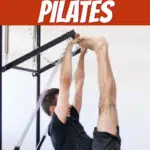
Pilates Knee Stretch Series
Saturday 28th of September 2019
[…] Read More […]
11 Mobility Maneuvers to Help Keep Your Joints Supple
Tuesday 13th of August 2019
[…] above, at least one of your workouts each week needs to be mobility-related – such as yoga, pilates, swimming, full-body stretching, or mobility […]
16 Battle Rope Exercises for a Lean, Powerful Body • Over Fifty and Fit
Sunday 7th of July 2019
[…] – however, it is a part of this complete workout. Toddler Jumps are a core strengthener, a calorie-burner, and – perhaps most importantly – a mobility maneuver that prepare you for more battle […]
The Pilates Chair Workout • Over Fifty and Fit
Monday 6th of May 2019
[…] I do pilates chair exercises in the classical sequence, but other times I do a different sequence that reduces the number of times I need to […]
11 Mobility Maneuvers to Help Keep Your Joints Supple
Wednesday 13th of February 2019
[…] or above, at least one of your workouts each week needs to be mobility-related – such as yoga, pilates, swimming, full-body stretching, or mobility […]